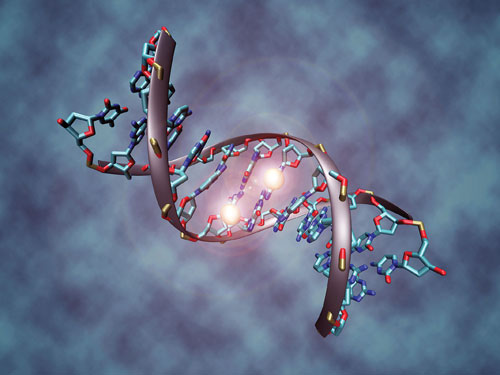Current methods to diagnose brain cancer based on molecular information rely upon invasive surgical techniques to obtain tissue samples. A noninvasive way to make a diagnosis would be a game-changer for both patients and healthcare practitioners. Another challenge in treating brain cancers is the accurate diagnosis of subtypes of brain cancers, information that is used to determine prognosis and assist in treatment planning.
Now, a simple—but highly sensitive—blood test has been found to both accurately diagnose and classify different types of brain tumors, resulting in what may be less invasive methods and better treatment planning for patients. The test is based on recent work that shows that DNA-methylation profiles from plasma reveal highly specific signatures to detect and accurately discriminate intracranial tumors that share cell-of-origin lineages.
The findings are published in the journal Nature Medicine in a paper titled, “Detection and discrimination of intracranial tumors using plasma cell-free DNA methylomes.” The study, which describes the noninvasive way to classify brain tumors, was also being presented (virtually) at the opening plenary session of the American Association for Cancer Research (AACR) Annual Meeting 2020: Turning Science into Lifesaving Care.

“If we had a better and more reliable way to diagnose and subtype tumors, we could transform patient care,” said Gelareh Zadeh, MD, PhD, the head of surgical oncology at University Health Network, head of the Toronto Central Regional Cancer Program at Cancer Care Ontario, and also the program medical director for the Krembil Neuroscience Centre at Toronto Western Hospital. “It would have a tremendous impact on how we treat these cancers, and in how we plan our treatments,” noted the co-senior author on the paper.
Daniel De Carvalho, PhD, a senior scientist at the Princess Margaret Cancer Centre and associate professor at the University of Toronto, and also a co-senior author on the paper, specializes in DNA methylation patterns and how a disruption can lead to unregulated growth in cancer cells. The lab previously developed a DNA methylation-based liquid biopsy approach to profile hundreds of thousands of these epigenetic alterations in DNA molecules circulating in the blood. Combining this technology with machine learning, his team was able to develop a highly sensitive and accurate test to detect and classify multiple solid tumors.
Together, the scientists and their teams applied this approach to intracranial brain tumor classification. They tracked the cancer origin and type by comparing patient tumor samples of brain cancer pathology, with the analysis of cell-free DNA circulating in the blood plasma from 221 patients.

Using this approach, they were able to match the circulating tumor DNA (ctDNA) to the tumor DNA, confirming their ability to identify brain tumor DNA circulating in the blood of these patients. Then, using a machine learning approach, they developed a computer program to classify the brain tumor type based solely on the ctDNA.
Prior to this, it was not thought possible to detect any brain cancers with a blood test because of the impermeable blood-brain barrier, said Zadeh. “But because this test is so sensitive in picking up even small amounts of highly specific tumor-derived signals in the blood, we now have a new, noninvasive way of detecting and discriminating between common brain tumors—something which was long thought impossible. This really is a tour de force,” she noted.
De Carvalho added that the field of identifying tumor-specific alterations in ctDNA with new, more sensitive tests in various body fluids—such as blood and urine—is now at a turning point because advanced technologies can detect and analyze even the smallest traces of cancer-specific molecular signatures from the vast quantities of circulating non-tumor DNA fragments.
“The possibility to map epigenetic modifications genome-wide, combined with powerful computational approaches, has brought us to this tipping point,” said De Carvalho.
“Molecular characterization of tumors by profiling epigenetic alterations in addition to genetic mutations gives us a more comprehensive understanding of the altered features of a tumor, and opens the possibilities for more specific, sensitive, and tumor agnostic tests.”
In an accompanying paper titled, “Detection of renal cell carcinoma using plasma and urine cell-free DNA methylomes,” published at the same time in Nature Medicine, Carvalho and collaborators from the Dana-Farber Cancer Institute at Harvard University show the same blood test can accurately identify kidney cancer from circulating cell-free DNA obtained either from plasma or from urine.


